Millions of older adults are missing crucial opportunities for early dementia detection, even as new treatments and interventions become available in 2025. Early detection is critical for patient outcomes and helps reduce healthcare costs across the system. Early dementia detection has become a bigger preventive priority in 2025 because new biomarker-based diagnostic tools and emerging treatments make intervention more effective when started sooner.
Research shows that cognitive decline can be linked to Alzheimer’s risk factors as early as ages 24 to 44, highlighting the importance of prevention strategies throughout life. Healthcare providers now have better tools to identify dementia alongside other conditions during routine visits. This creates opportunities to improve care planning and quality of life for patients and their families.
The healthcare landscape has shifted toward value-based care models that recognize early intervention saves money over time. Medicare Annual Wellness Visits now include cognitive screening as a standard part of preventive care. These changes reflect growing understanding that catching cognitive decline early benefits both patients and the broader healthcare system.
Key Takeaways
- New diagnostic tools and treatments in 2025 make early dementia detection more valuable than ever before
- Routine cognitive screening during preventive care visits helps identify problems before they become severe
- Early intervention reduces healthcare costs while improving patient outcomes and quality of life
The Growing Urgency of Early Dementia Detection in 2025
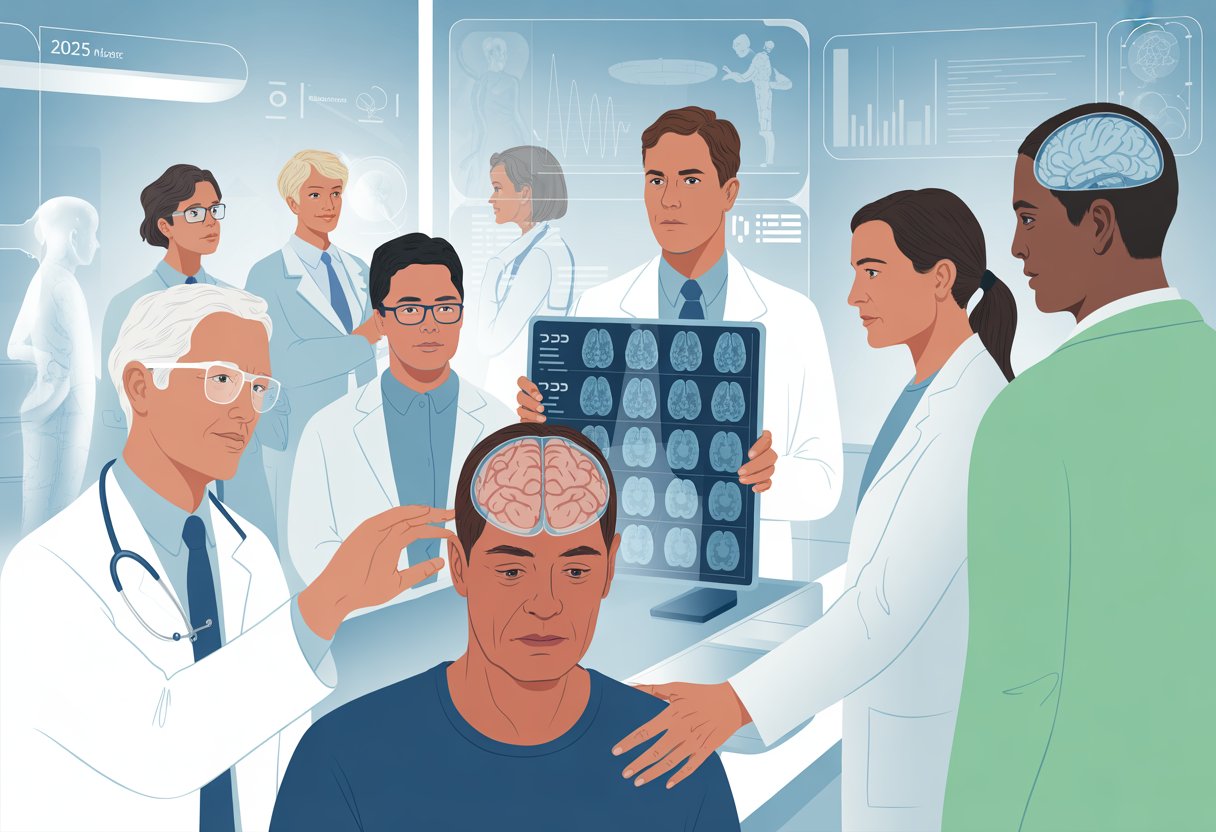
The healthcare landscape faces unprecedented challenges as dementia cases surge past 7 million Americans aged 65 and older. Policy shifts now prioritize early detection while delayed diagnosis continues to burden families and healthcare systems.
Rising Dementia Prevalence and Demographic Shifts
More than 7.2 million Americans aged 65 and older now live with Alzheimer’s disease, marking the first time this milestone has been reached. This represents a significant increase from previous years as the population ages.
Key demographic factors driving urgency:
- Baby boomer generation entering peak dementia risk years
- Longer life expectancy increasing exposure to age-related cognitive decline
- Growing number of older adults living independently longer
The global impact extends far beyond American borders. Approximately 57 million people worldwide live with dementia, creating an international health crisis.
Experts predict dementia cases will double by 2050. This projection makes early detection strategies critical for managing future healthcare demands.
Primary care physicians now see more patients with early cognitive concerns. Many older adults seek evaluation before symptoms severely impact daily activities.
Shifting Policy and Healthcare Priorities
Healthcare systems increasingly recognize early detection as essential for effective dementia management. Government policies now emphasize dementia prevention and regular screening programs to identify at-risk individuals sooner.
Recent policy developments include:
- Integration of cognitive assessments into routine medical checkups
- Medicare coverage expansions for dementia screening tools
- Blood biomarker testing validation efforts
The Alzheimer’s Association prepares new clinical practice guidelines for 2025. These guidelines will address blood-based biomarker tests and cognitive assessment tools for primary care settings.
AI and advanced diagnostic methods are transforming detection capabilities in clinical practice. Healthcare providers gain access to more sophisticated screening tools than ever before.
Policy makers advocate for insurance coverage requirements for diagnostic tests. This approach aims to speed up alzheimer’s disease diagnosis and improve treatment access.
Impacts of Delayed Diagnosis
Delayed dementia diagnosis creates cascading problems for patients, families, and healthcare systems. Many older adults miss opportunities for early intervention that could slow disease progression.
Financial consequences of late diagnosis:
- Total care costs reach $384 billion annually excluding unpaid family care
- Additional $413 billion in unpaid family caregiver time
- Higher emergency room visits and hospitalizations
Early detection enables patients to access new treatments while cognitive function remains higher. These medications work best when started before significant brain changes occur.
Families benefit from earlier planning opportunities when diagnosis happens sooner. They can make legal, financial, and care decisions while the person with dementia can participate meaningfully.
Nearly 4 in 5 Americans want to know about alzheimer’s disease before symptoms interfere with activities. This preference shows growing acceptance of early testing despite potential concerns.
Primary care physicians report that patients increasingly request cognitive testing proactively. This shift represents a major change from previous years when families avoided screening.
Proven Benefits of Early Diagnosis and Intervention
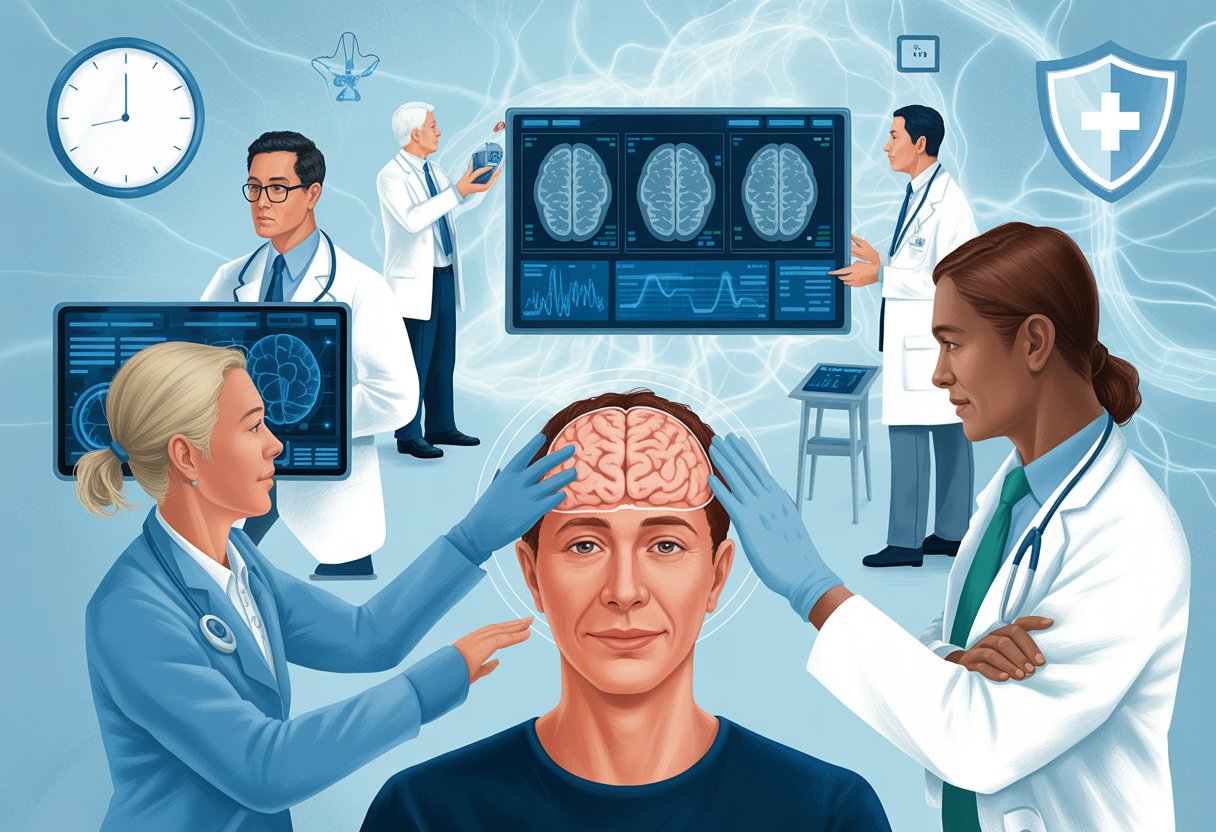
Early dementia detection provides measurable advantages through improved treatment response rates, better symptom management strategies, and enhanced access to comprehensive care networks. Research shows patients diagnosed in mild cognitive impairment stages experience slower disease progression and maintain independence longer.
Optimizing Treatment Outcomes and Planning
Early detection allows for improved symptom management through medications and lifestyle changes that can help slow dementia progression. Acetylcholinesterase inhibitors work most effectively when started during mild cognitive impairment stages.
Patients receive maximum benefit from these treatments when memory loss symptoms are still manageable. Clinical assessment during early stages allows doctors to create personalized treatment plans.
Key Treatment Advantages:
- Medications slow cognitive decline by 6-12 months
- Non-drug interventions like cognitive stimulation therapy remain effective
- Treatment side effects are easier to manage in healthier patients
Early diagnosis enables doctors to identify specific dementia subtypes. Alzheimer’s disease responds differently to treatments than vascular dementia or Lewy body dementia.
Families gain time to discuss future care preferences while patients retain decision-making capacity. This planning occurs at an early stage of illness while the person has mental capacity.
Enhancing Quality of Life for Patients and Families
Early diagnosis can improve the quality of care and quality of life for people living with alzheimer’s and dementia. Patients understand their condition better and make informed choices about daily activities.
Memory loss becomes less frightening when patients know the cause. They can maintain social connections and hobbies longer with proper support.
Quality of Life Improvements:
- Reduced anxiety about unexplained symptoms
- Better sleep patterns with appropriate medications
- Maintained independence in familiar environments
- Stronger family relationships through open communication
Caregivers experience less stress when they understand what to expect. Earlier recognition gives patients and their families extra time for any financial and legal planning they need to undertake.
Early intervention prevents dangerous situations like driving accidents or medication errors. Safety planning protects both patients and family members.
Facilitating Access to Support and Resources
With a diagnosis from a medical professional, individuals and families gain access to support systems and treatment options. Healthcare teams coordinate care between specialists, primary doctors, and community services.
Insurance coverage often requires formal diagnosis for memory care services. Early detection opens doors to day programs, respite care, and support groups.
Available Resources Include:
- Memory care specialists and neurologists
- Social workers for care coordination
- Educational programs about dementia progression
- Financial planning and legal assistance
- Caregiver support groups and training
Family carers of people with dementia are at high risk of physical and mental illness and require equal attention and support. Early diagnosis connects them with resources before crisis situations develop.
Clinical assessment results help families understand which services they need most. Some patients benefit from adult day care while others need home health assistance.
Community organizations provide specialized programs for different dementia types. Alzheimer’s associations offer education about disease stages and coping strategies.
Innovations in Screening and Diagnostic Tools
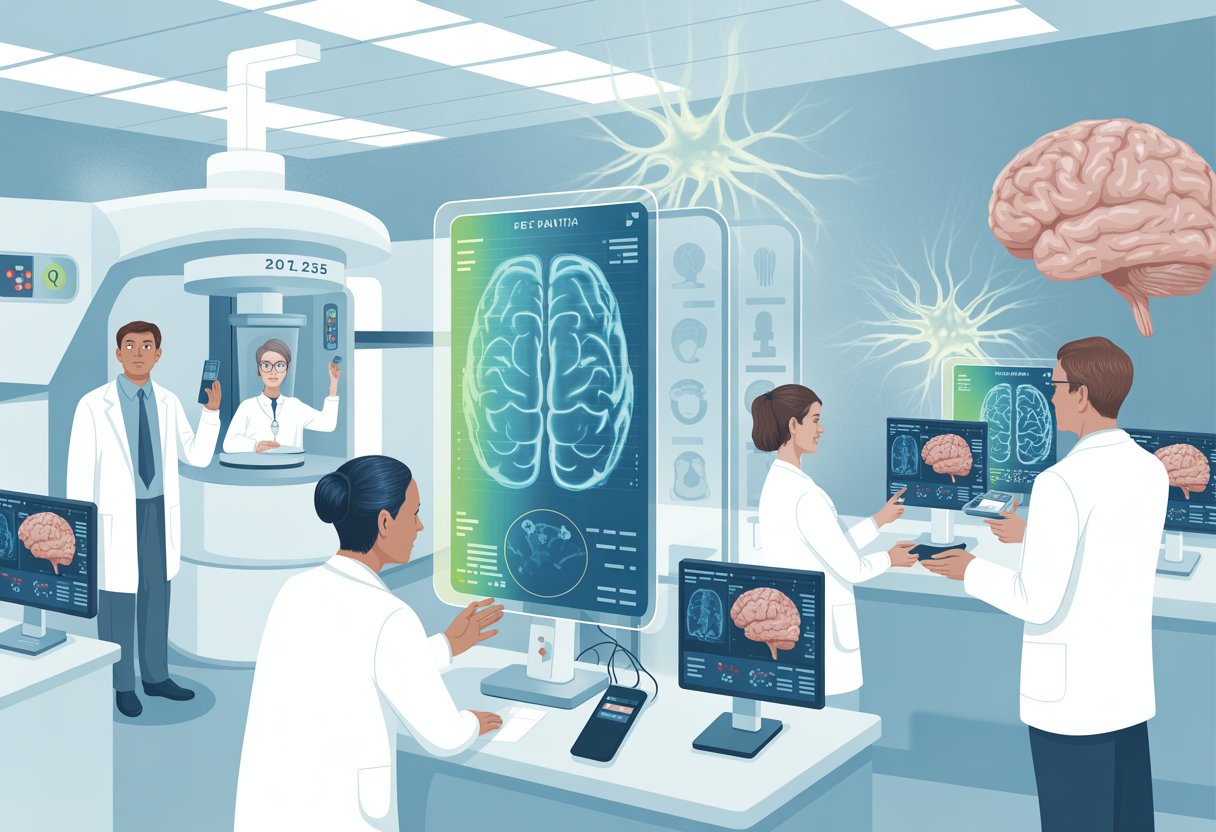
New technologies are making dementia detection faster and more accurate than ever before. Digital screening tools can now identify cognitive decline in just five minutes during routine visits, while blood biomarker testing offers simple alternatives to invasive procedures.
Digital Tools and Artificial Intelligence in Detection
Artificial intelligence has emerged as a powerful tool for early dementia detection and diagnosis. AI systems can analyze patterns in cognitive data that doctors might miss.
Digital cognitive screening apps now work on tablets and smartphones. These tools test memory, attention, and thinking skills in minutes. A five-minute iPad screening showed promise during primary care visits for identifying Alzheimer’s disease.
The PREDICTOM study uses AI-driven algorithms to combine multiple biomarkers for better accuracy. This system stores digital health journeys and provides risk assessment tools.
Key AI applications include:
- Pattern recognition in brain scans
- Voice analysis for speech changes
- Eye-tracking technology
- Digital biomarker analysis
Digital technology helps overcome challenges in developing regions where specialist access is limited. These tools make cognitive screening more accessible worldwide.
Blood Biomarker Testing and Biomarkers
Blood biomarker testing represents a major breakthrough in dementia detection. These tests measure proteins linked to Alzheimer’s disease without requiring brain scans or spinal taps.
Key blood biomarkers include tau proteins and amyloid-beta levels. These proteins build up in the brain years before symptoms appear. Blood tests can detect these changes early.
Research shows blood, saliva, and stool potentially hold dementia-related biomarkers. This opens doors to routine screening methods that are widely accessible.
Advantages of blood biomarker testing:
- Less invasive than spinal taps
- Lower cost than brain imaging
- Faster results
- Can be done in primary care settings
The tests help identify patients who might benefit from new treatments like lecanemab and donanemab. These drugs work best when started early in the disease process.
Blood biomarkers also help monitor treatment response. Doctors can track changes in protein levels to see if therapies are working.
Neuropsychological and Cognitive Evaluations
Innovative cognitive assessment tools are enhancing early diagnosis and monitoring capabilities. These evaluations test different aspects of thinking and memory.
Modern neuropsychological testing uses computer-based assessments. These digital tools provide more precise measurements than traditional paper tests. They also reduce testing time and human error.
Common cognitive domains tested:
- Memory: Learning new information and recall
- Attention: Focus and concentration abilities
- Language: Word finding and comprehension
- Executive function: Planning and problem-solving
Clinical trials now use these tools to measure treatment effects. Researchers can detect small changes in cognitive function that indicate disease progression or improvement.
The tests help distinguish between normal aging and early dementia. They also identify mild cognitive impairment, which often leads to dementia. Early detection through neuropsychological testing allows for timely intervention and treatment planning.
Role of Primary Care and Preventive Health Visits
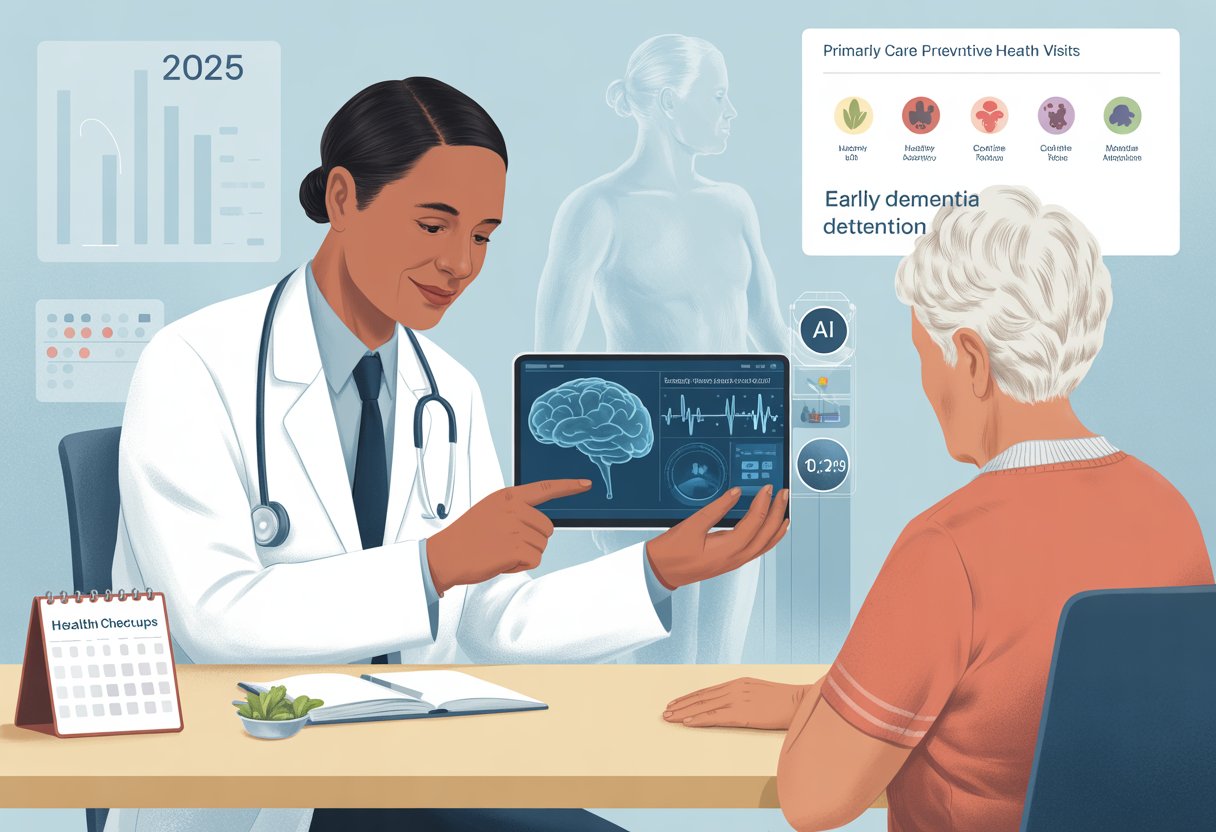
Primary care physicians serve as the first line of defense in identifying early cognitive changes through routine screenings and preventive visits. Medicare’s structured wellness programs now provide systematic opportunities for cognitive assessments, while expanded training helps doctors recognize subtle warning signs.
Medicare Annual Wellness Visit Integration
The Medicare Annual Wellness Visit includes cognitive assessment as a standard component for beneficiaries. This structured approach allows doctors to track mental changes over time through consistent yearly evaluations.
Key Assessment Areas:
- Memory and concentration testing
- Functional ability reviews
- Medication management evaluation
- Depression screening
Medicare beneficiaries receive these assessments at no cost. The visits create detailed baselines for future comparisons. Doctors can spot gradual declines that patients and families might miss.
The standardized format helps ensure consistent care quality. Primary care practices can now bill Medicare for cognitive assessments during wellness visits. This coverage removes financial barriers that previously limited screening access.
Primary Care’s Expanding Role in Dementia Detection
Primary care clinicians play a pivotal role in early recognition of cognitive problems in their patients. Regular patient relationships allow doctors to notice personality changes and memory issues during routine visits.
Modern primary care training emphasizes dementia detection skills. Doctors learn to use brief screening tools that take just minutes to complete. These quick tests can identify patients who need more detailed evaluation.
Common Screening Tools Used:
- Mini-Mental State Examination (MMSE)
- Montreal Cognitive Assessment (MoCA)
- Clock Drawing Test
- Verbal fluency tests
Primary care doctors now coordinate referrals to specialists when needed. They also provide initial counseling to families about next steps. Early detection practices improve outcomes for patients and caregivers while reducing healthcare system burdens.
Multidisciplinary Approaches and Care Coordination
Primary care physicians work with geriatrics specialists, neurologists, and social workers to provide complete dementia care. This team approach ensures patients get appropriate services at each disease stage.
Care coordination includes connecting families with community resources. Primary care offices often maintain lists of local support groups and day programs. They also help coordinate transportation and home care services.
Team Members Include:
- Geriatricians for specialized care
- Social workers for family support
- Pharmacists for medication reviews
- Mental health counselors
Electronic health records allow team members to share patient information easily. This coordination prevents duplicate testing and conflicting treatment plans. Regular team meetings ensure everyone stays updated on patient progress and changing needs.
Addressing Health Disparities and Risk Factors
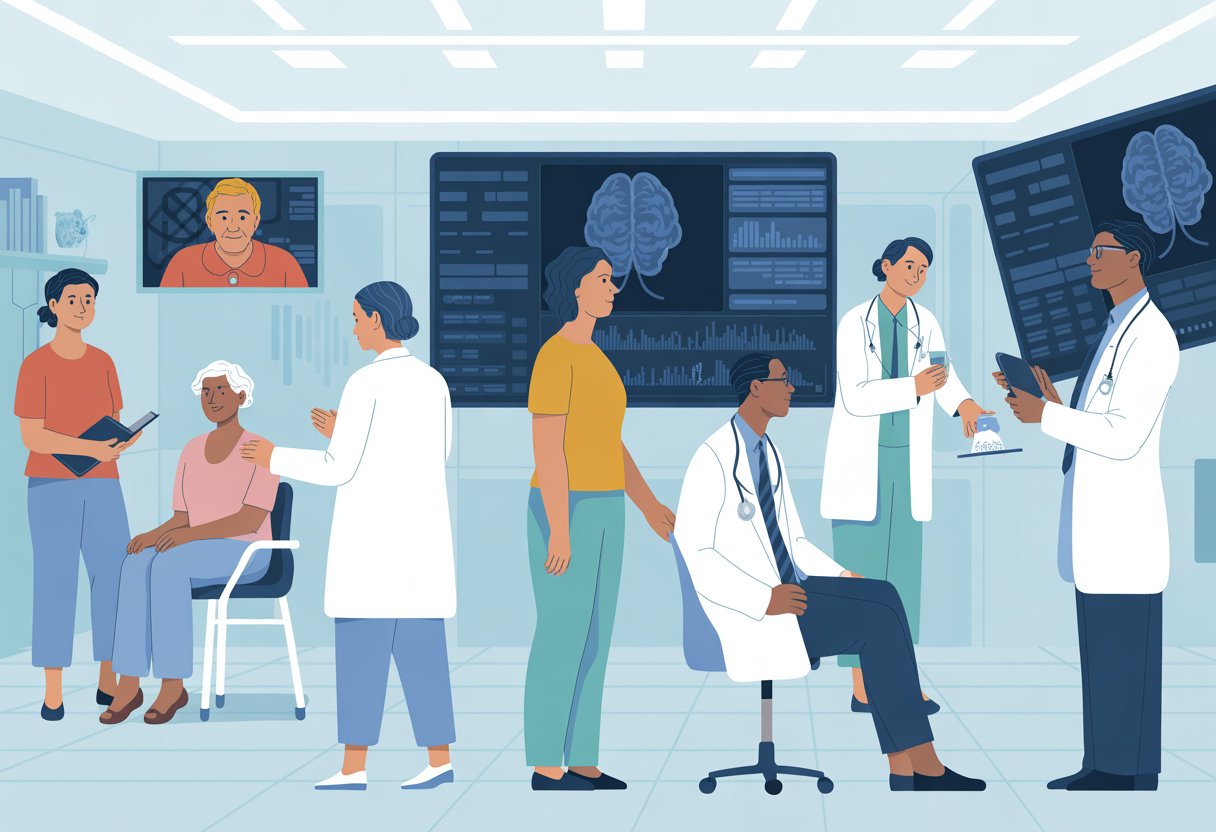
Early dementia detection faces significant challenges across different populations, with minority groups experiencing higher rates of cognitive impairment and related dementias. Economic barriers and modifiable health conditions create additional obstacles that require targeted intervention strategies.
Socioeconomic and Racial Disparities in Diagnosis
Non-Hispanic Black and Hispanic adults show significantly higher prevalence of mild cognitive impairment and dementia compared to non-Hispanic white participants. Black adults face 2.83 times higher odds for cognitive impairment and 2.53 times higher odds for dementia.
Hispanic populations experience similar disparities with 2.52 times higher odds for cognitive impairment and 2.62 times higher odds for dementia. These differences persist even after controlling for other factors.
Key Disparity Factors:
- Limited access to specialist care
- Language barriers in clinical settings
- Cultural mistrust of healthcare systems
- Reduced insurance coverage for cognitive assessments
Primary care providers face particular challenges when diagnosing Alzheimer’s disease and related dementias in minoritized communities. Educational attainment and pension status also influence early detection rates significantly.
Managing Modifiable Risk Factors
Fourteen potentially treatable factors explain 45% of dementia causes, making early intervention crucial for prevention strategies. These conditions often remain undiagnosed until cognitive symptoms appear.
Primary Modifiable Risk Factors:
- Diabetes: Poorly controlled blood sugar damages brain vessels
- Hypertension: High blood pressure increases vascular dementia risk
- Obesity: Excess weight contributes to inflammation and metabolic dysfunction
- Depression: Untreated mental health conditions accelerate cognitive decline
Cardiovascular conditions like heart problems and stroke show strong associations with early dementia detection. Managing these conditions requires comprehensive healthcare approaches that address multiple risk factors simultaneously.
Vision and hearing loss represent additional treatable conditions that impact cognitive function. Healthcare providers can address these through routine screening and intervention programs.
Population-Specific Barriers to Early Detection
Gender differences create unique challenges in dementia screening programs. Women show higher prevalence rates for both mild cognitive impairment and dementia compared to men across all age groups.
Geographic location affects access to cognitive assessment tools and specialist referrals. Rural communities face particular shortages of dementia specialists and diagnostic resources.
Common Detection Barriers:
- Lack of culturally appropriate screening tools
- Limited availability of bilingual healthcare providers
- Transportation difficulties for regular appointments
- Financial constraints preventing comprehensive evaluations
State and local public health agencies work to address these barriers through targeted intervention programs. These efforts focus on improving primary care capacity and reducing health disparities.
Age-related factors complicate early detection efforts. Adults aged 65 and older represent the majority of cases, but symptoms often begin years before formal diagnosis occurs.
Challenges and Future Outlook for Dementia Prevention
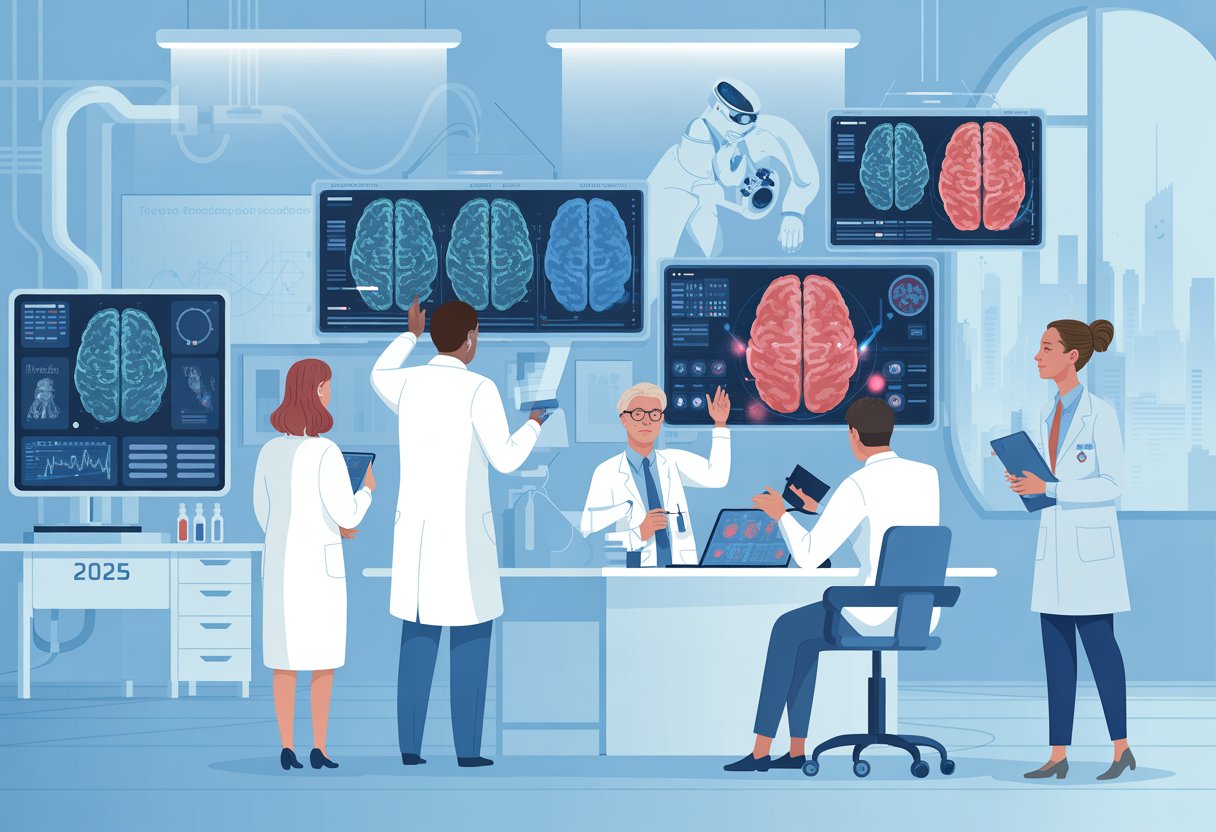
The path to widespread dementia prevention faces significant hurdles in diagnostic precision and healthcare access. Policy changes and expanded screening programs will determine how effectively communities can implement early detection strategies.
Balancing Diagnostic Accuracy and Overdiagnosis
Healthcare providers face a delicate balance when screening for early cognitive decline. Early detection of dementia remains in exploratory status despite growing research interest.
Key diagnostic challenges include:
- False positive results that cause unnecessary anxiety
- Mild cognitive impairment that may never progress to dementia
- Limited availability of specialized testing equipment
- Inconsistent training among healthcare providers
Common reasons for misdiagnosis highlight the need for better diagnostic frameworks. Medical professionals must consider when screening benefits outweigh potential harm.
Alzheimer’s & dementia: diagnosis, assessment & disease monitoring requires careful protocol development. Providers need clear guidelines to avoid both missed cases and overtreatment.
Implications for Public Health Policy
Public health organizations recognize the growing dementia crisis and are developing response strategies. The CDC and Alzheimer’s Association have created road maps for state and local organizations.
Government funding priorities must shift toward prevention programs. Current healthcare systems focus heavily on treatment rather than early intervention.
Policy areas requiring attention:
- Medicare coverage for cognitive screening
- Training programs for primary care doctors
- Community-based prevention initiatives
- Data collection systems for tracking outcomes
The World Dementia Council held meetings in 2025 focusing on brain health and prevention strategies. These discussions bring together researchers and policymakers to address implementation challenges.
Pathways for Expanded Access and Advocacy
Millions of older adults miss dementia screening opportunities despite the benefits of early detection. Access barriers prevent many people from receiving timely care.
Expansion strategies include:
- Mobile screening units for rural areas
- Technology-based assessment tools
- Community health worker programs
- Insurance reform to cover prevention services
Neuroimaging advances show promise for risk prediction but face adoption challenges. New technologies must become more affordable and accessible.
Clinical trials continue to provide evidence for prevention approaches. International prevention trials will help researchers develop robust prevention strategies.
Advocacy groups play a crucial role in pushing for policy changes. They help educate families about screening benefits and lobby for expanded healthcare coverage.
Frequently Asked Questions
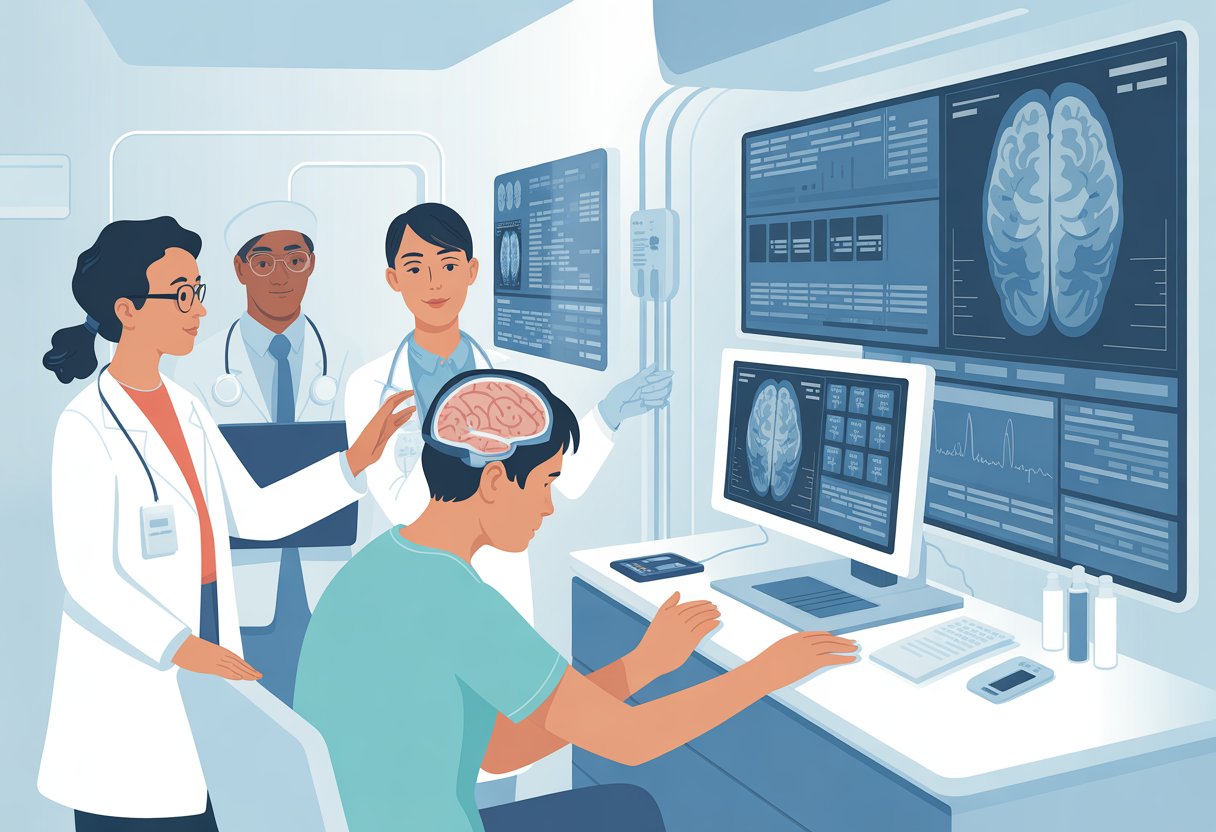
Early dementia detection offers significant advantages for patients, families, and healthcare systems. The latest diagnostic tools and screening methods have made identification more accurate and accessible than ever before.
What are the primary benefits of diagnosing dementia at an early stage?
Early diagnosis provides patients and families with access to treatments that help with symptoms and time to build a care team. It also gives people the opportunity to specify care and legal plans for the future.
Early detection allows for improved symptom management through medications and lifestyle changes that can help slow the progression of dementia. It opens doors to support systems and treatment options while helping families plan for the future.
Patients with early diagnosis can make informed decisions about their healthcare while they still have cognitive capacity. They can also participate in clinical trials for new treatments that may benefit them.
How does early detection of dementia impact the effectiveness of treatments?
Early intervention creates better outcomes because treatments work more effectively in the initial stages of dementia. Medications designed to slow cognitive decline show greater benefits when started before significant brain damage occurs.
Lifestyle interventions like exercise, diet changes, and cognitive training have stronger impacts during early stages. These approaches can help maintain brain function longer when implemented early in the disease process.
Early diagnosis can improve the quality of care and quality of life and may reduce the financial and emotional impact of the disease on families.
What developments in 2025 have improved the accuracy of early dementia diagnosis?
Advanced brain imaging techniques now detect changes in brain structure and function years before symptoms appear. Blood tests can identify specific proteins linked to Alzheimer’s disease with greater precision than previous methods.
Artificial intelligence tools help doctors analyze cognitive test results more accurately. These systems can spot subtle patterns in memory and thinking tests that humans might miss.
Digital cognitive assessments provide more detailed information about brain function. These tools can track changes over time and identify problems earlier than traditional paper-and-pencil tests.
Can early identification of dementia reduce the long-term societal and healthcare costs?
Early detection helps families avoid expensive emergency room visits and hospitalizations. People with early diagnosis can receive appropriate care in less costly community settings instead of emergency facilities.
Planning ahead reduces the need for crisis interventions that cost healthcare systems significant money. Families can arrange support services gradually rather than scrambling for immediate placement in expensive facilities.
Early intervention programs cost less than managing advanced dementia cases. Preventive care and symptom management in early stages require fewer resources than intensive care for severe cases.
What are the most recent screening methods for early detection of dementia now widely in use?
The Medicare Annual Wellness Visit now includes cognitive assessment provisions that help identify problems early. Healthcare providers can use this covered benefit to screen patients annually for cognitive changes.
Brief cognitive screening tools like the Mini-Cog and Montreal Cognitive Assessment take only minutes to complete. These tests can identify potential problems during routine doctor visits.
Most dementia cases go undiagnosed, with symptoms often subtle, unreported, or mistaken for normal aging. New screening approaches help doctors catch these cases earlier.
How do current prevention strategies benefit from the early detection of dementia symptoms?
Early detection allows doctors to address risk factors like high blood pressure and diabetes that may worsen cognitive decline. Managing these conditions can slow the progression of dementia symptoms.
Identifying cognitive changes early enables targeted interventions like memory training and social engagement programs. These activities can help maintain brain function and delay more serious symptoms.
Early detection helps people make lifestyle changes that may protect their brain health. This includes improving sleep habits, increasing physical activity, and maintaining social connections.